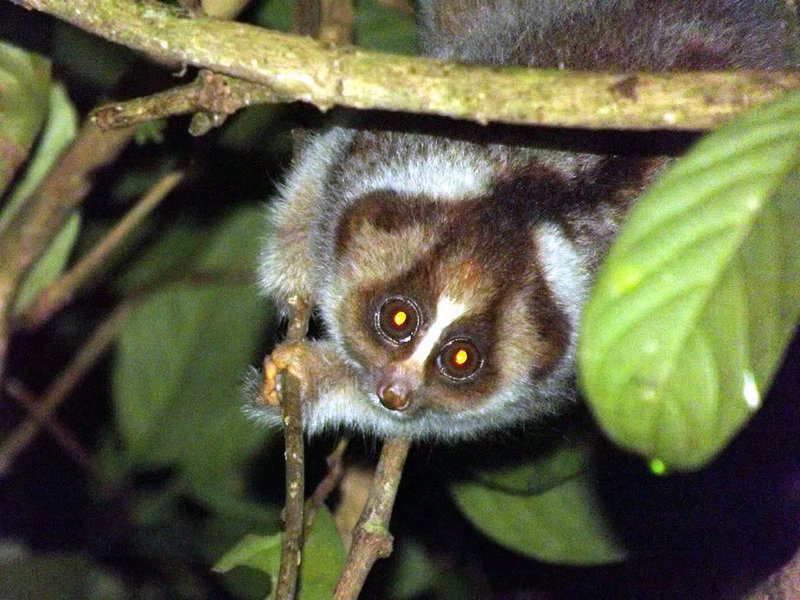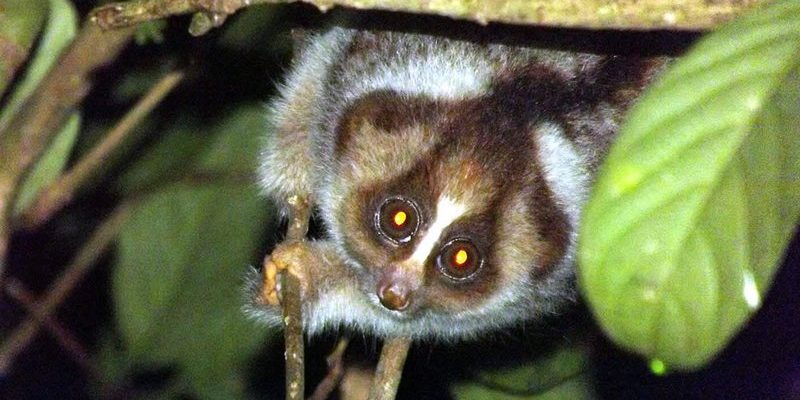
Introduction to Lorises
Loris are fascinating little creatures that often fly under the radar when we think about wild animals. Imagine a cuddly teddy bear with big, round eyes, but with a touch of mystery that makes you wonder about its secret life. These nocturnal primates belong to the family Lorisidae and are primarily found in the forests and woodlands of Africa and Asia. Just picture them creeping around at night, silently exploring their surroundings as they hunt for insects, fruits, and small animals. It’s no wonder their unique characteristics and behaviors have intrigued researchers and animal lovers alike.
So, what exactly sets lorises apart from other primates? Beyond their adorable appearance, lorises have some remarkable traits that make them true wonders of the animal kingdom. For starters, they have a distinctively slow and deliberate style of movement, which is where their name comes from. “Loris” derives from the Dutch word “loris,” meaning “silly” or “sluggish,” reflecting their leisurely approach to life. But don’t let that fool you—these creatures are equipped with some clever adaptations that help them survive in the wild. Let’s dive deeper into their traits, habitats, diet, and much more.
Physical Characteristics of Lorises
Lorises are relatively small primates, typically measuring around 7 to 17 inches in length, depending on the species. Their stature might remind you of a kitten, but they’re much more agile. One of their most notable features is their huge, expressive eyes, which help them see well in low-light conditions. This is essential since they are predominantly nocturnal. Their fur is soft and dense, often showing variations in color from gray to reddish-brown, helping them blend seamlessly into their forest environments.
Their limbs, which appear slightly stubbier than those of other primates, are another striking feature. Lorises have strong, grasping hands that allow them to cling to branches with ease. This is particularly useful when they’re foraging for food or escaping from predators. In fact, their slow movement isn’t just a quirky trait; it’s a survival strategy. By moving slowly, they reduce their chances of being spotted by potential threats, such as snakes or birds of prey.
Interestingly, some species have a unique feature called a “toxic bite.” They possess a gland in their elbow that secretes toxins. When they lick their fur, the toxins spread, acting as a defense mechanism against predators. Imagine a tiny creature packing a punch—it’s both surprising and fascinating!
Habitat and Distribution
Lorises are not picky when it comes to their homes. They thrive in a variety of habitats, including tropical rainforests, deciduous forests, and even scrublands. However, they primarily inhabit areas of Southeast Asia and parts of Africa, particularly in countries like India, Sri Lanka, and Indonesia. Their range can be challenging to pinpoint due to habitat loss from deforestation and urbanization. These changes threaten their populations, making conservation efforts more critical than ever.
They tend to favor forested areas filled with plenty of trees and abundant foliage. This dense cover provides safety and easy access to food sources. You might think of these areas as their personal buffet, where they can munch on fruits, insects, and even small reptiles. The lush greenery creates both a playground and a sanctuary for these captivating creatures.
It’s also important to note that different species of lorises have adapted to their specific environments. For instance, the Slow Loris prefers dense rainforest habitats, while the Slender Loris is equally content in secondary forests and urban settings. These adaptations allow lorises to thrive in various ecosystems, showcasing their resilience as a species.
Diet and Feeding Habits
Lorises have quite the varied palate! Their diet primarily consists of fruits, tree gum, insects, and sometimes small vertebrates. They are considered *frugivorous*, meaning they love to feast on a range of fruits available in their habitat. What’s fascinating is their ability to select ripe fruit, showcasing their understanding of the world around them. Imagine being able to pick the juiciest fruit without any guidance—that’s a skill these little primates have honed over time.
Their feeding behavior often takes place at night, where they stretch and reach for food using their strong limbs. They can even leap short distances between branches, showcasing agility that belies their slow-moving reputation. The use of their sharp canine teeth helps them access tree gum, which is a significant part of their diet. It’s akin to finding hidden treasures in a dense forest—you never know what you might stumble across while foraging!
But here’s where it gets even more interesting: some lorises use their toxic bite not just for defense but also to incapacitate their prey. When they bite an insect, the toxins can make it easier for them to consume their meal. It’s an efficient way of securing food, and it highlights just how resourceful these animals can be.
Behavior and Social Structure
When it comes to behavior, lorises lead a mostly solitary life. They prefer to have their own space and can often be found foraging alone. This doesn’t mean they’re completely anti-social, though! Lorises do communicate with one another using a variety of vocalizations, including soft calls and grunts. These sounds help them maintain contact with potential mates or offspring. It’s like having a secret language that only they understand, which helps keep their connections alive.
One captivating aspect of their social structure is their parenting methods. Female lorises are typically responsible for raising their young, which adds a layer of complexity to their lives. Mothers usually give birth to one or two infants, and the little ones cling to their mother’s fur for safety during the early weeks of life. This protective behavior reflects their nurturing instincts and the close bond between mother and child.
Lorises are also known for their distinct grooming rituals. They often engage in mutual grooming to strengthen social bonds, which might remind you of how friends share moments of connection. This behavior not only helps maintain hygiene but also reinforces their relationships with one another. It’s these little moments of tenderness that reveal a lighter side to their solitary tendencies.
Conservation Status and Threats
While lorises are undeniably charming, they face several significant threats that put their survival at risk. Habitat loss is a major issue, as forests are cut down for agriculture, logging, and urban development. As their homes shrink, so do their chances of survival. Imagine being forced into smaller and smaller corners of your world; it’s a reality lorises are currently facing.
In addition to habitat destruction, lorises are heavily affected by illegal wildlife trade. Their big eyes and adorable appearance have made them popular in the exotic pet trade, leading to alarming numbers of lorises being captured and sold. This not only threatens their populations but also disrupts the delicate balance of their ecosystems.
Conservation efforts are crucial to help save lorises. Organizations worldwide are working to protect their habitats and raise awareness about the importance of these unique creatures. You might think of it as a rescue mission for a friend in need—every little bit helps to ensure that these enchanting primates can continue to thrive in their natural environments.
Interesting Facts about Lorises
Here are some compelling facts about lorises that might leave you even more fascinated:
| Species: | Slow Loris, Slender Loris, Pottos |
| Size: | 7 to 17 inches in length |
| Weight: | 1 to 3.5 pounds |
| Habitat: | Tropical and deciduous forests |
| Diet: | Fruits, insects, tree gum |
| Lifespan: | Up to 20 years in captivity |
| Conservation Status: | Vulnerable to Critically Endangered |
These little tidbits not only highlight the charm of lorises but also underline the urgency of conserving these incredible creatures.
FAQ
What are lorises and where do they live?
Lorises are small, nocturnal primates that belong to the family Lorisidae. They primarily inhabit tropical rainforests and woodlands in Africa and Asia. You can find them in countries such as India, Sri Lanka, and various parts of Southeast Asia. Their preferred habitats offer plenty of trees and foliage that provide food and safety from predators.
How do lorises communicate?
Lorises use a combination of vocalizations and physical gestures to communicate. They can produce soft calls, grunts, and other sounds that help them stay in touch with their mates or young. Additionally, grooming behaviors can reinforce social bonds between them, similar to how humans create connections through friendly gestures.
What do lorises eat?
Lorises have a diverse diet that mainly includes fruits, tree gum, insects, and sometimes small vertebrates. They are known to be excellent foragers, selecting ripe fruits and using their sharp teeth to access tasty tree gum. Their ability to find food at night showcases their cleverness and adaptability.
Are lorises dangerous to humans?
While lorises are not inherently dangerous to humans, some species possess a toxic bite due to a gland on their elbows. When they lick their fur, the toxins spread, which can cause reactions if they bite humans. However, they are generally shy and prefer to avoid confrontation.
Why are lorises endangered?
Lorises face multiple threats, including habitat loss due to deforestation, commercial logging, and agricultural expansion. Additionally, they are heavily impacted by the illegal wildlife trade, where they are often sold as exotic pets. These factors have led to declining populations, making conservation efforts essential.
Can lorises be kept as pets?
Keeping a loris as a pet is not advisable. They have specialized needs and require specific diets and habitats to thrive. Moreover, capturing lorises from the wild contributes to the declining populations and disrupts their ecosystems. It’s best to appreciate them in their natural environments rather than as pets.
How long do lorises live?
In the wild, lorises typically live around 10 to 15 years. However, in captivity, where they receive proper care and protection from predators, they can live up to 20 years or more. This longevity showcases their resilience and adaptability, especially when nurtured in a safe environment.
What is unique about the Slow Loris?
The Slow Loris is particularly known for its slow movement and adorable, large eyes. They possess a unique defense mechanism—when threatened, they can deliver a toxic bite. Their slow, deliberate movements help them avoid detection by predators, making them masters of stealth in their habitat.
What conservation efforts are in place for lorises?
Various organizations are dedicated to protecting lorises and their habitats through conservation strategies, education, and awareness campaigns. These efforts aim to mitigate habitat destruction and combat illegal wildlife trade. You can help by supporting such organizations and spreading awareness about the plight of lorises.
How can I help lorises in the wild?
Supporting conservation organizations, advocating for wildlife protection laws, and raising awareness are effective ways to help lorises. Additionally, promoting sustainable practices and reducing your impact on the environment can contribute to the preservation of their natural habitats, ensuring they can thrive for generations to come.

